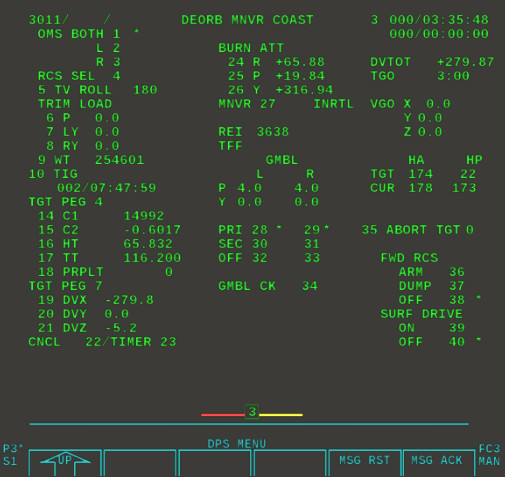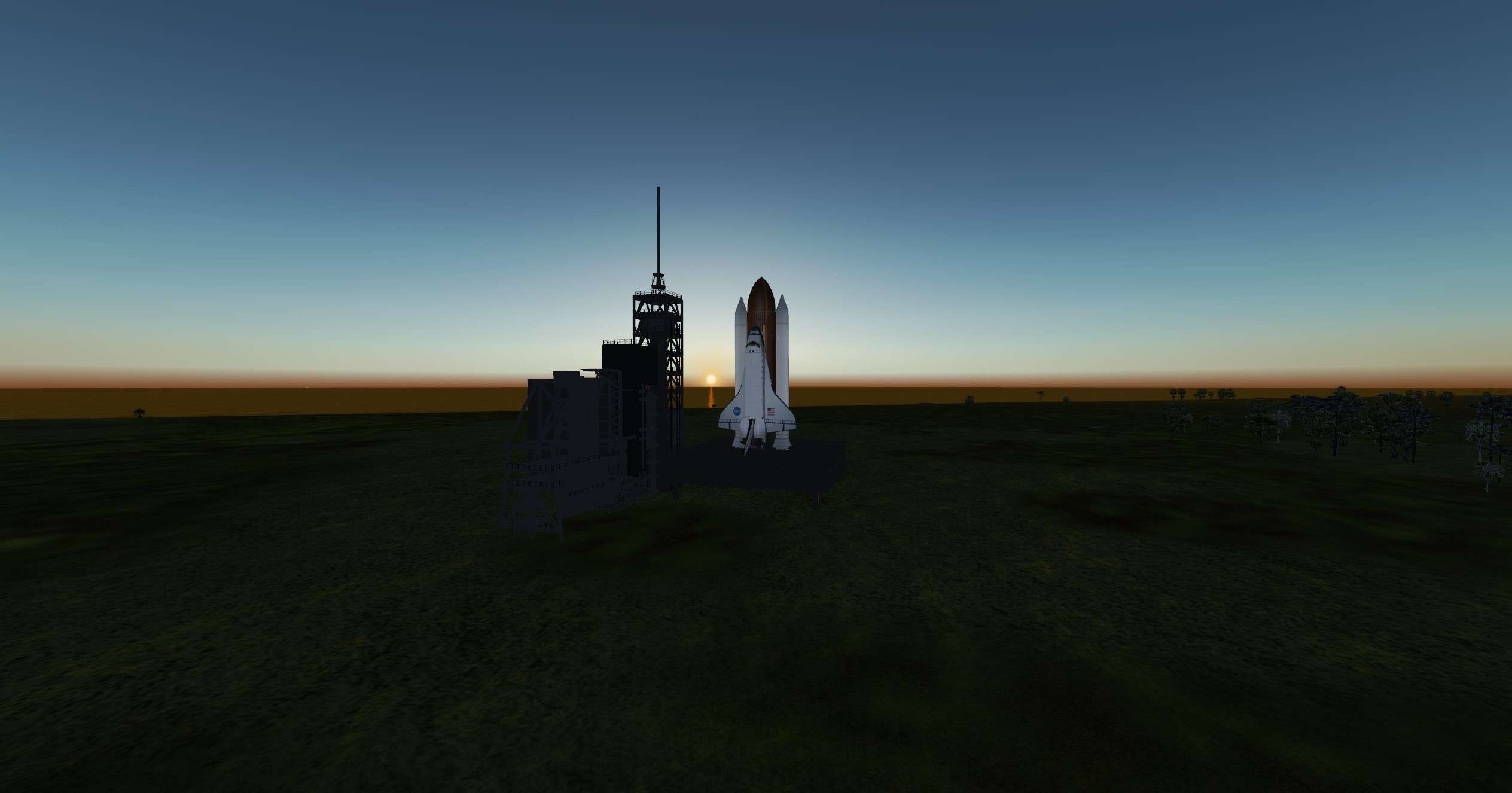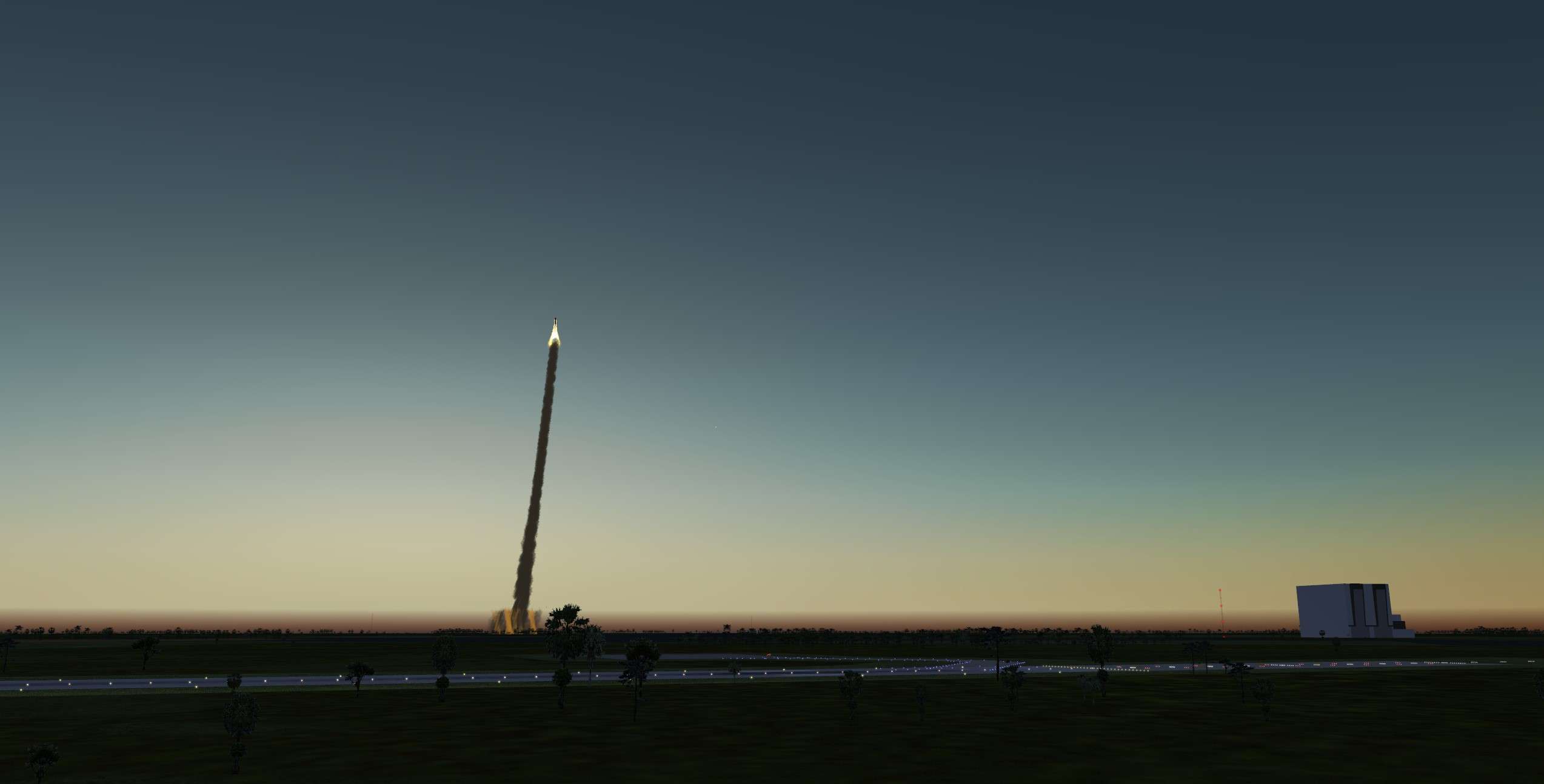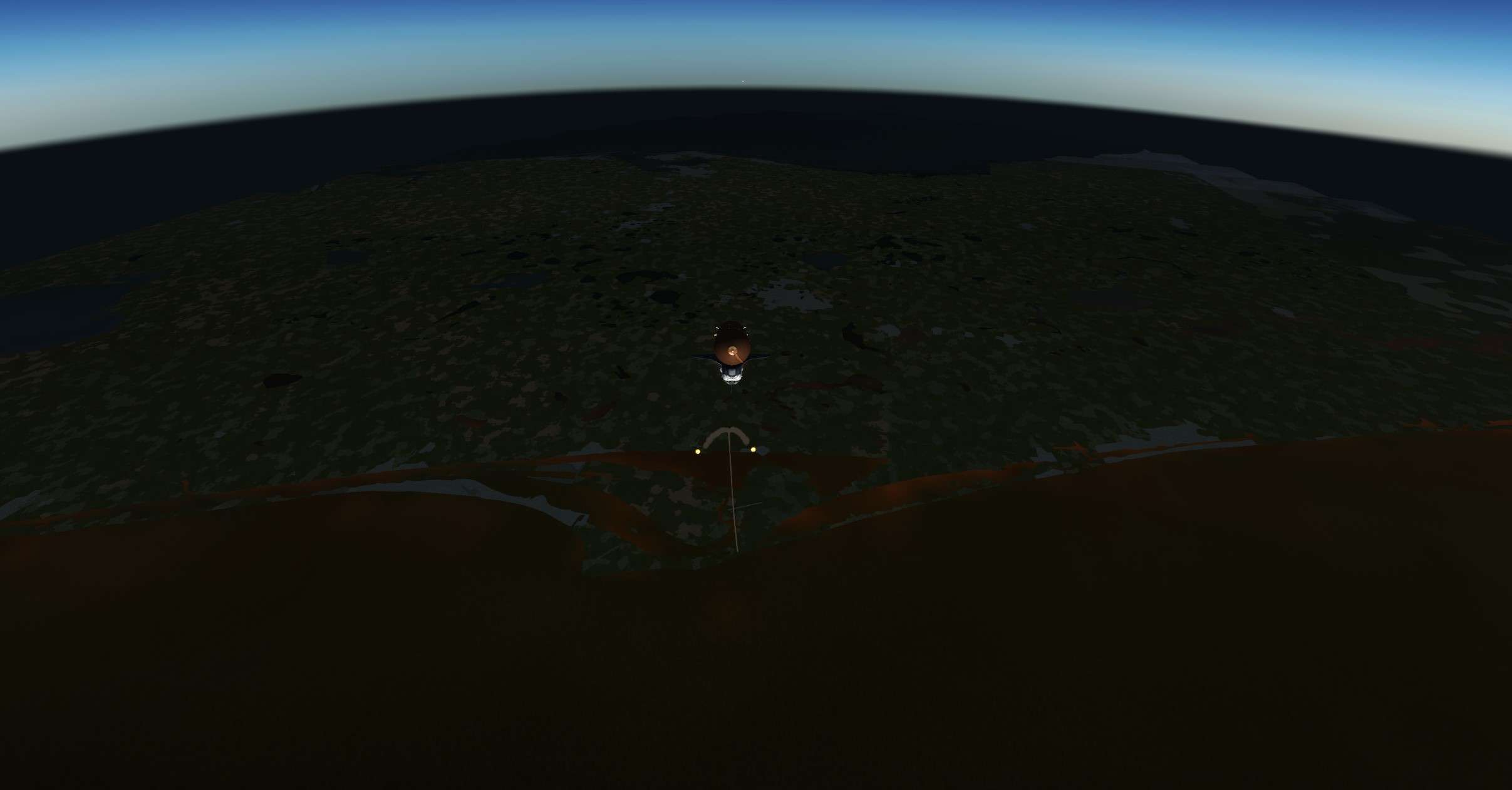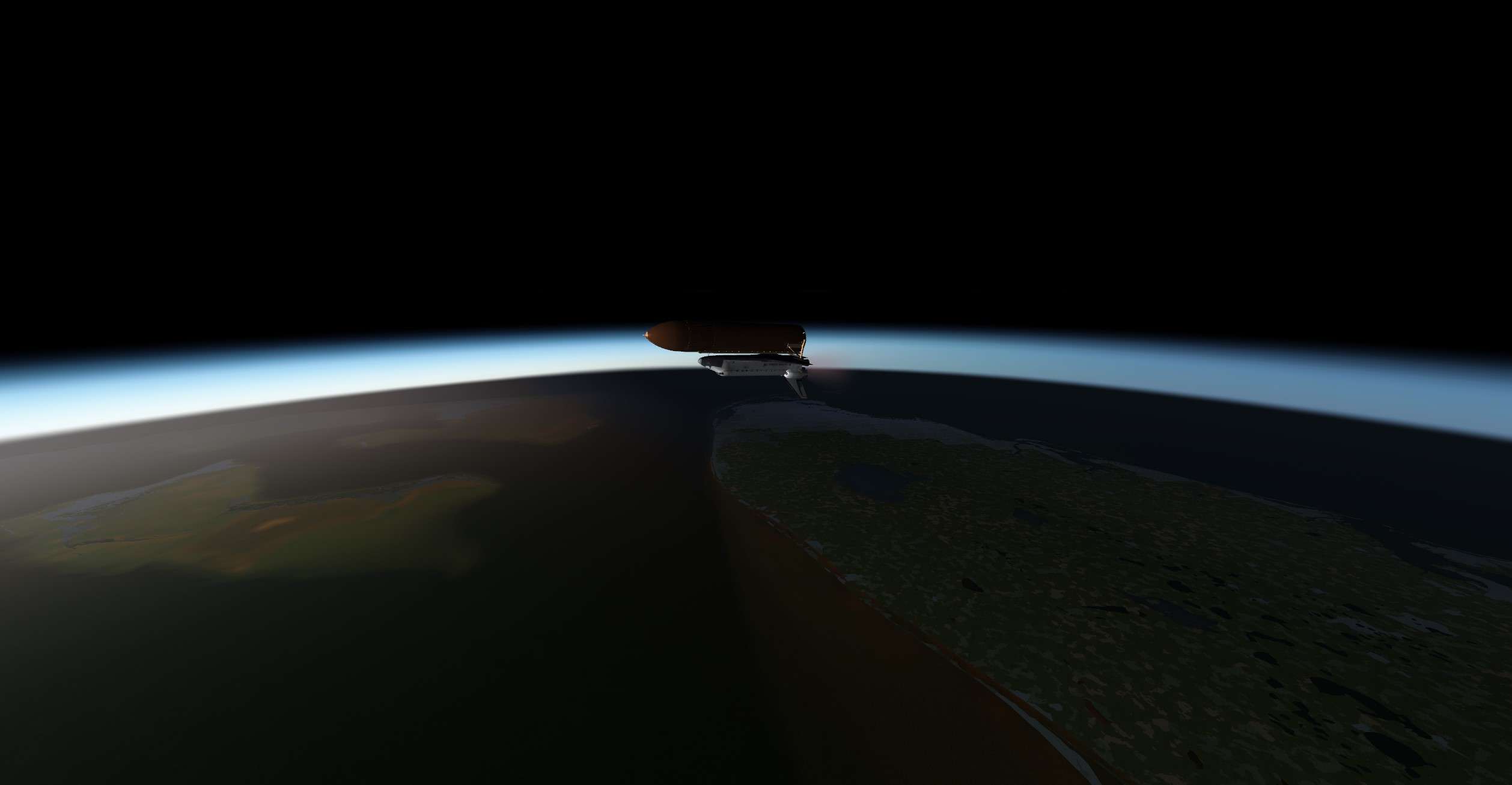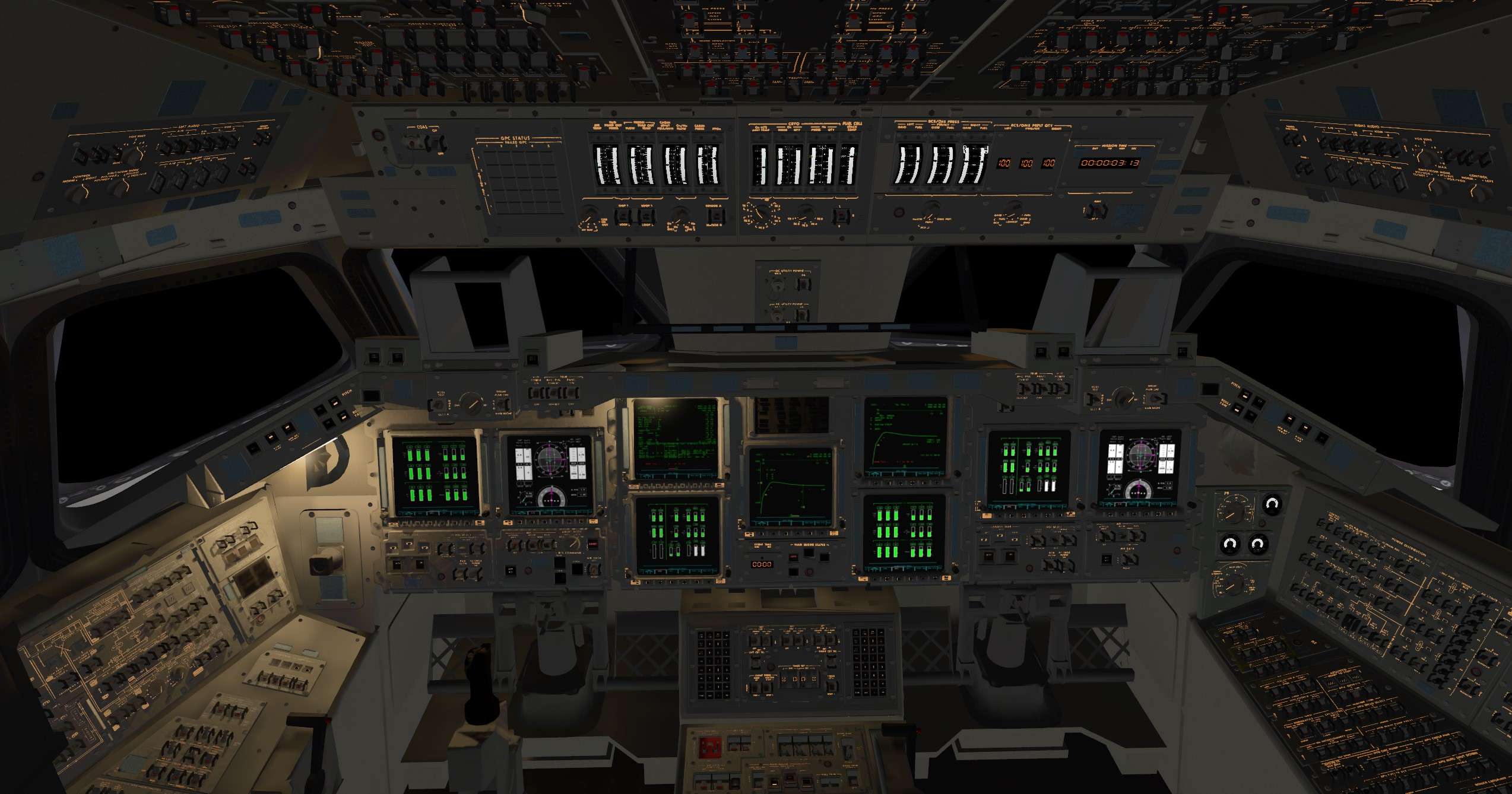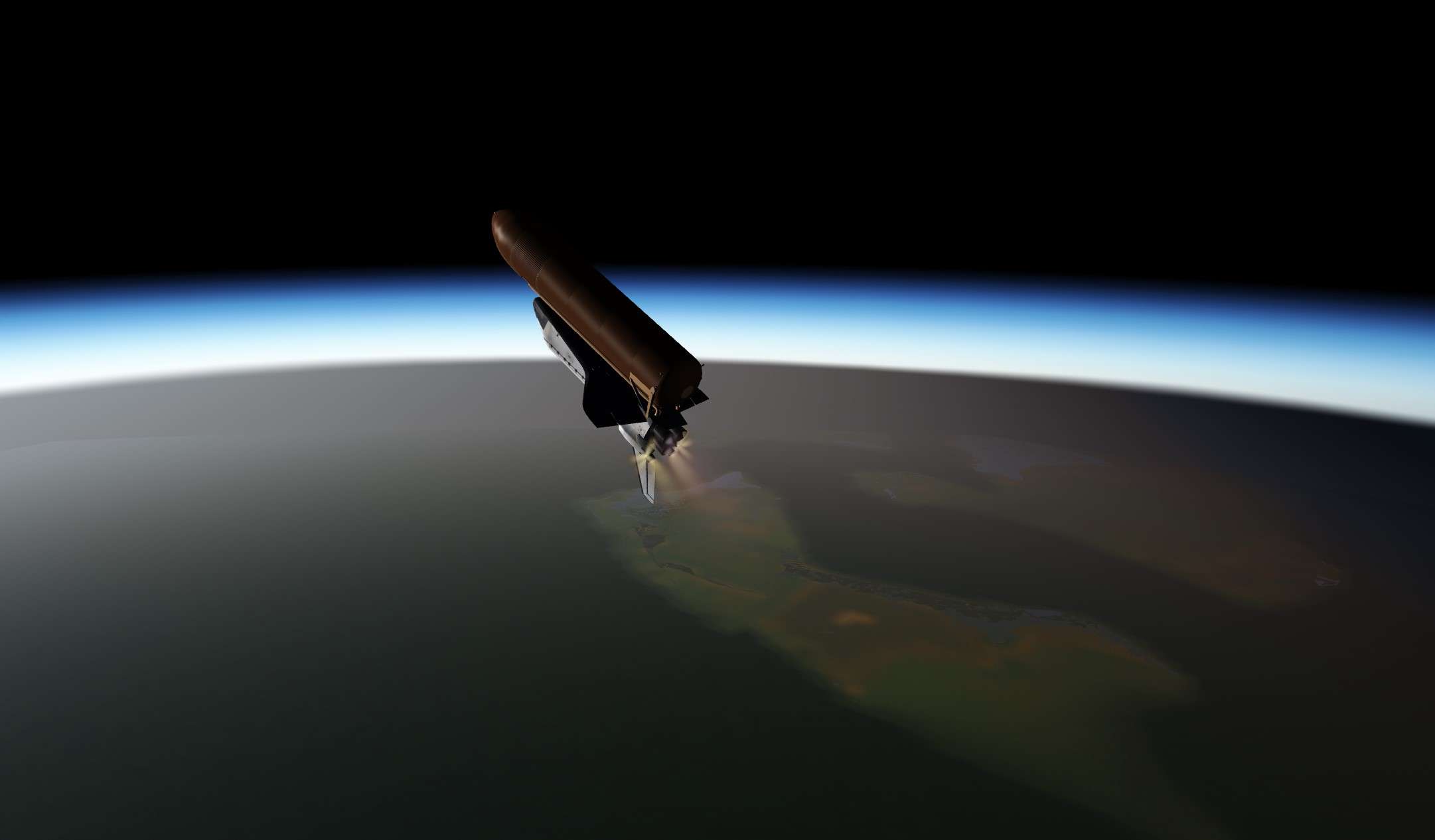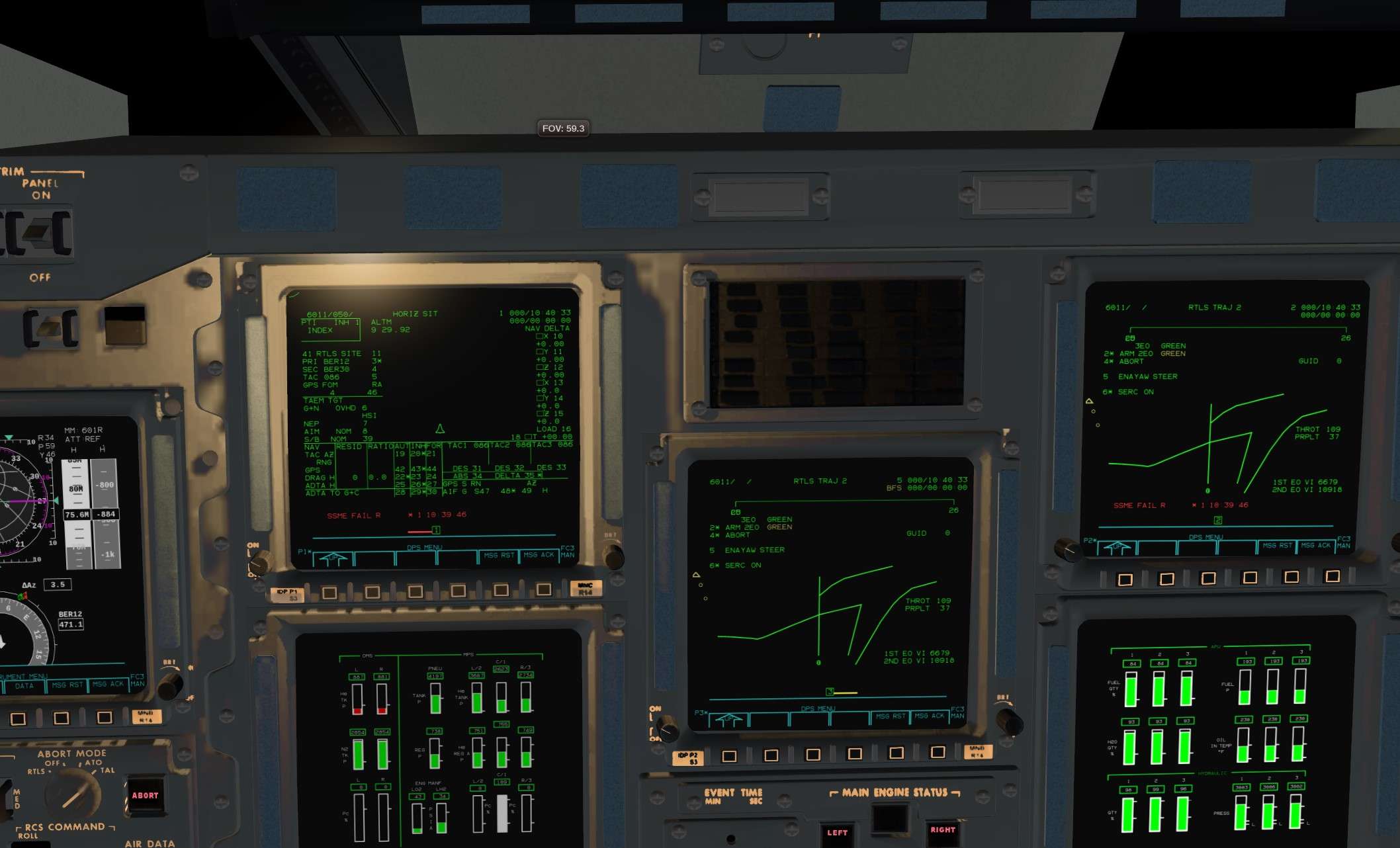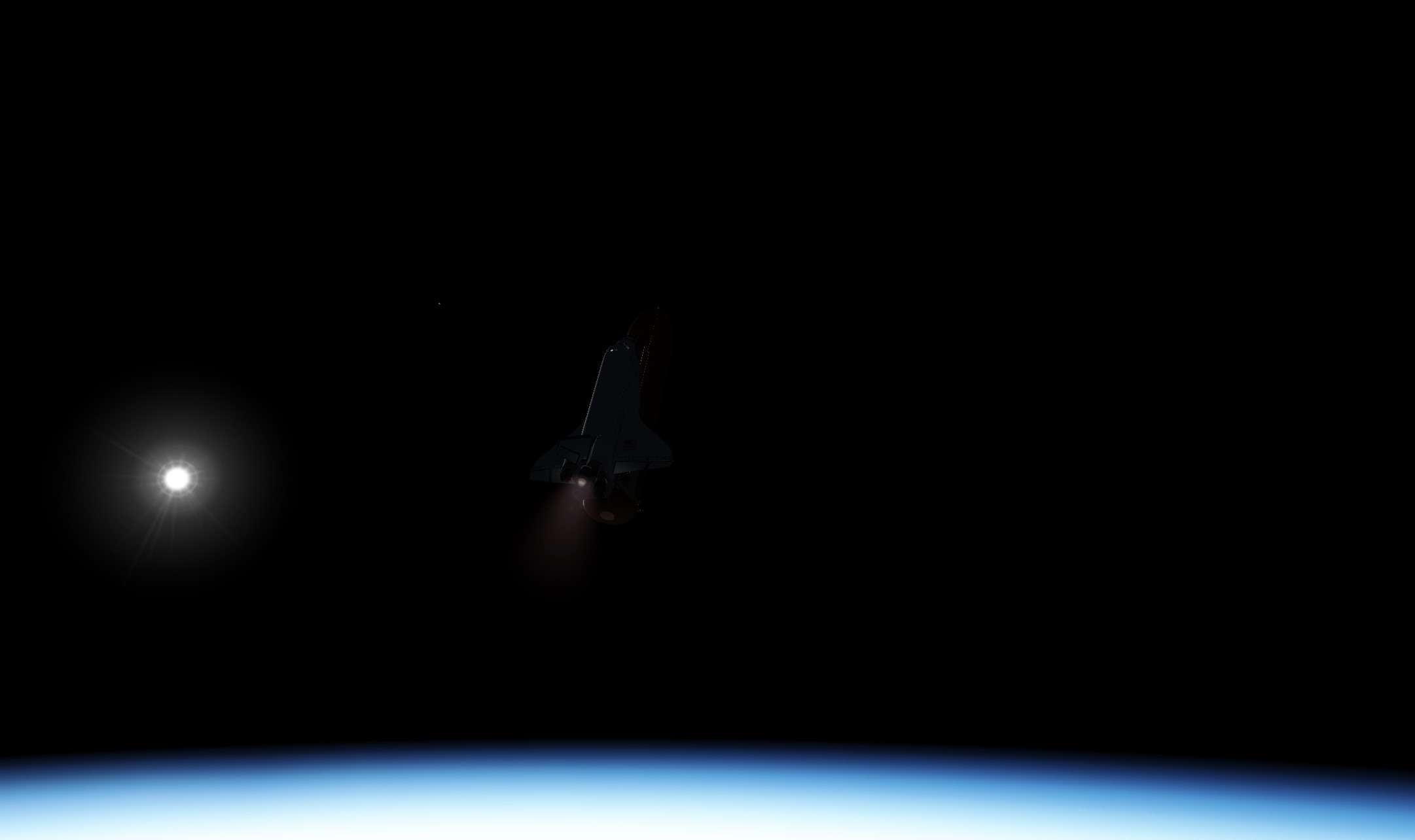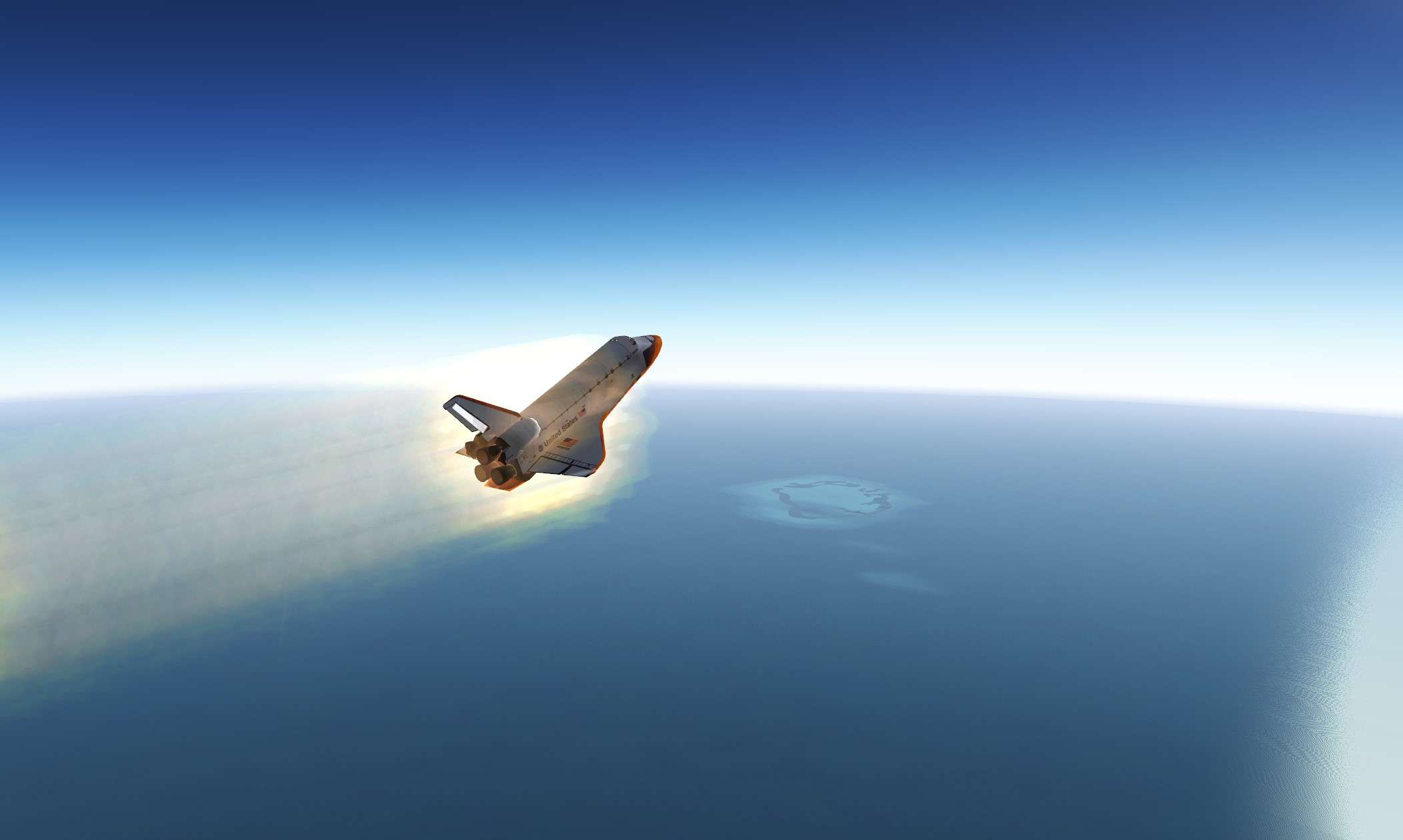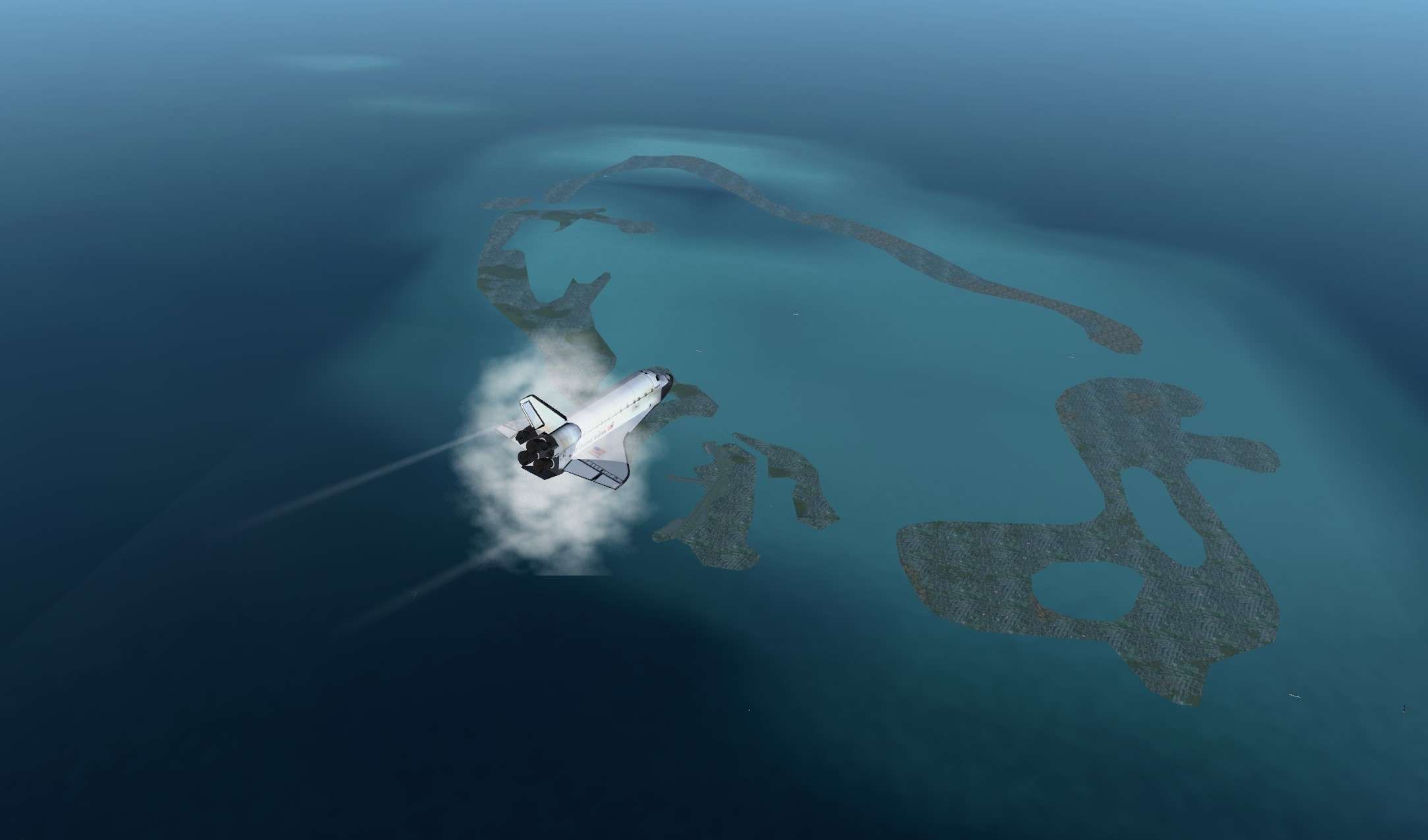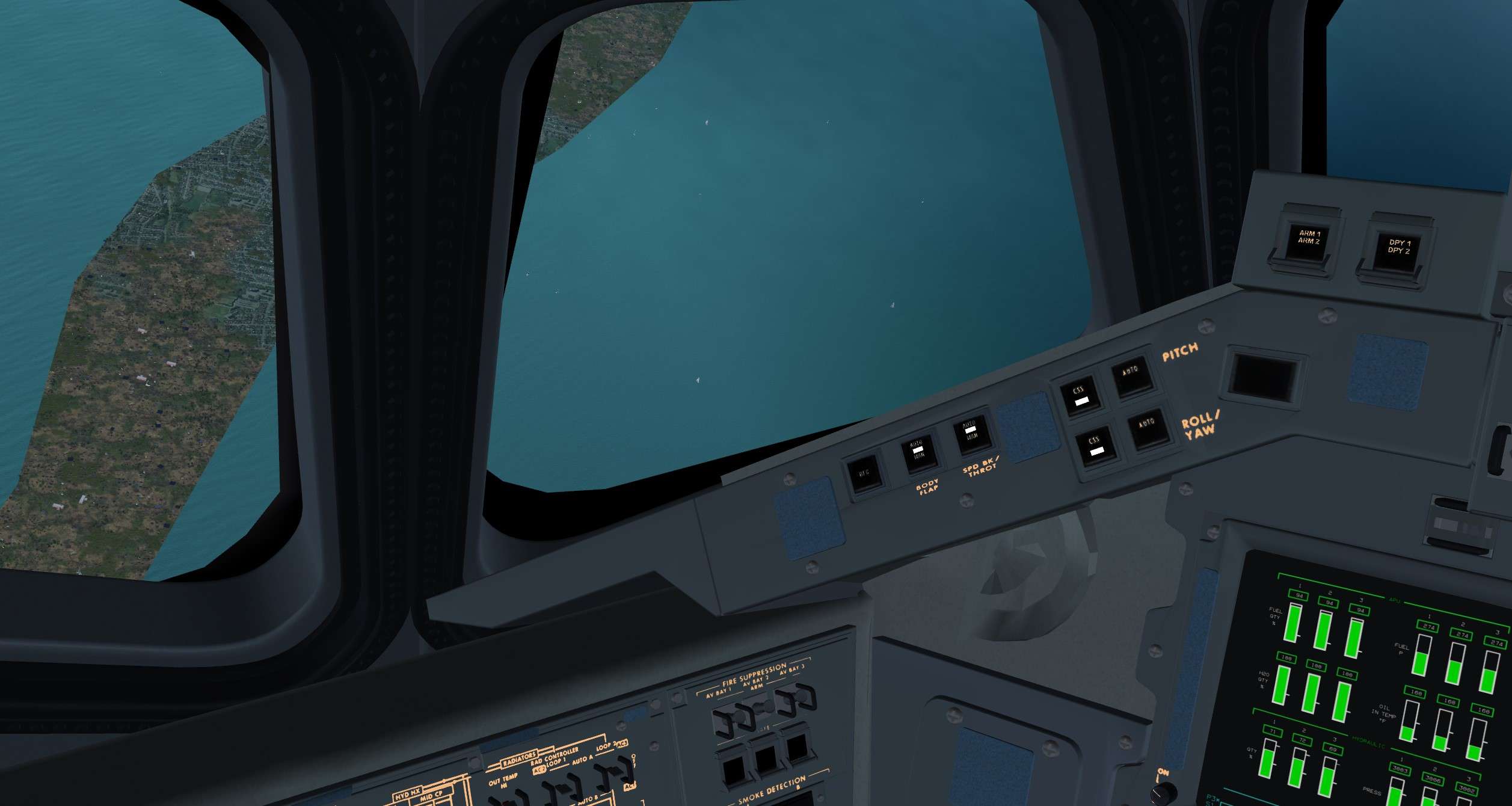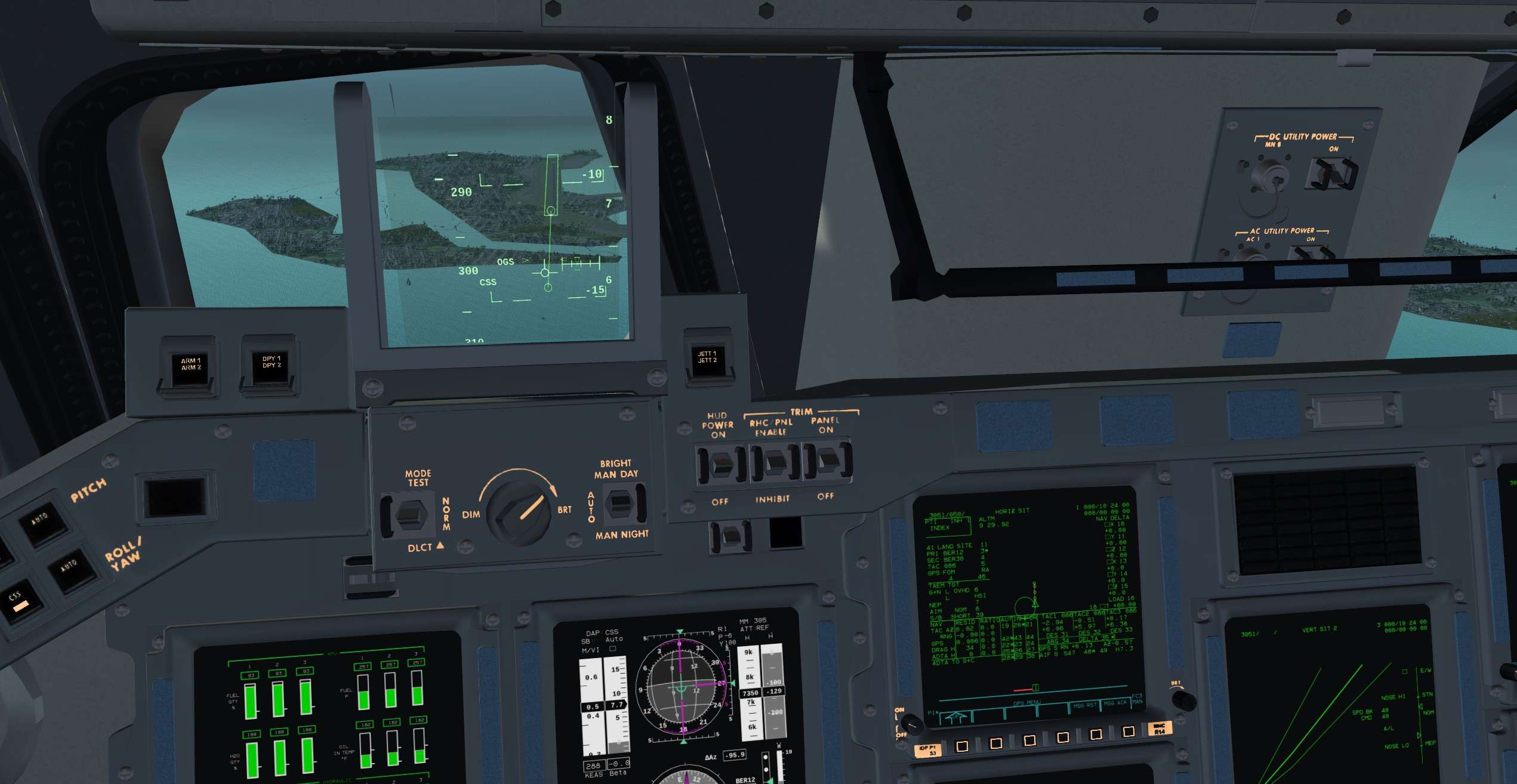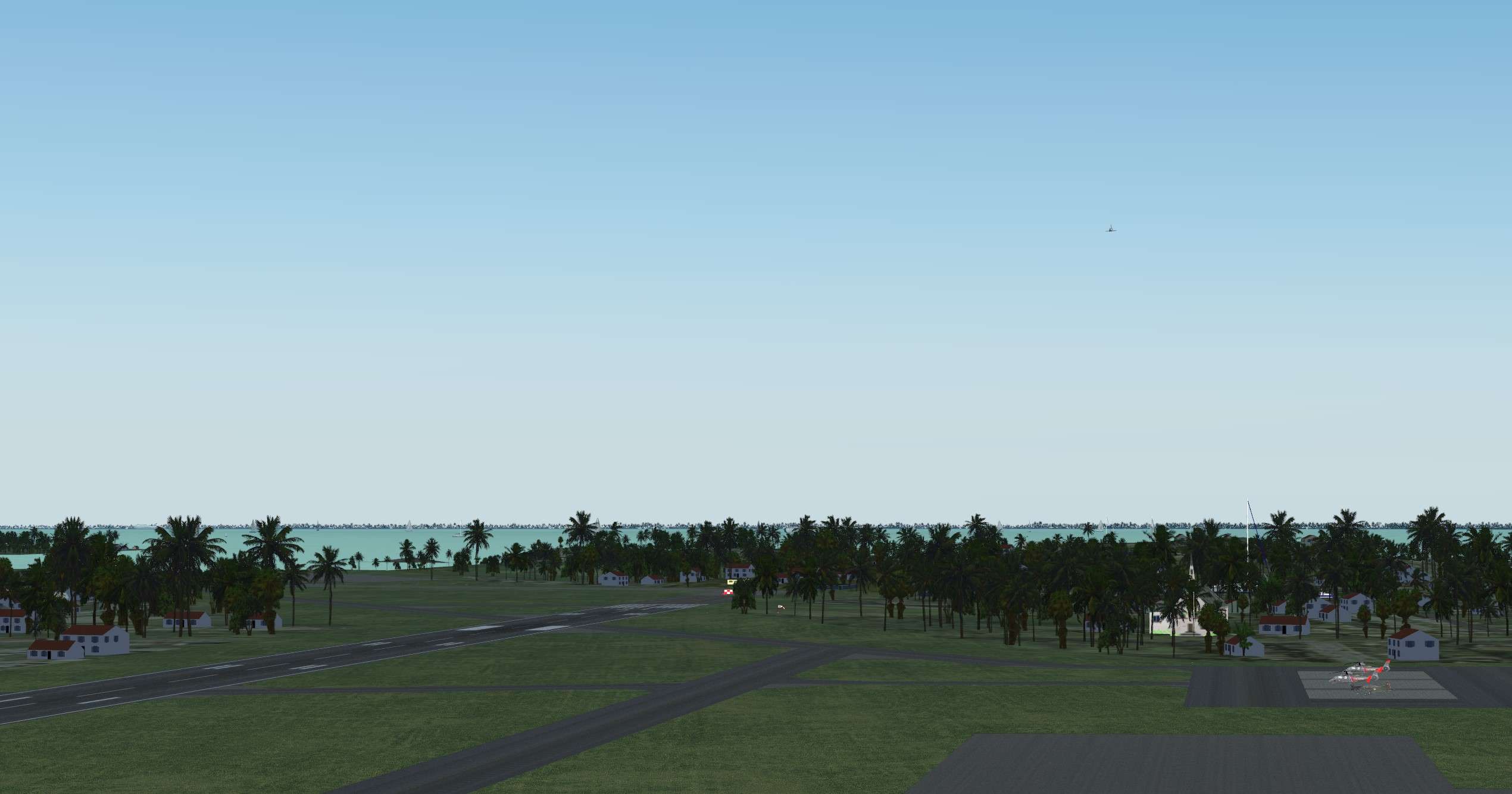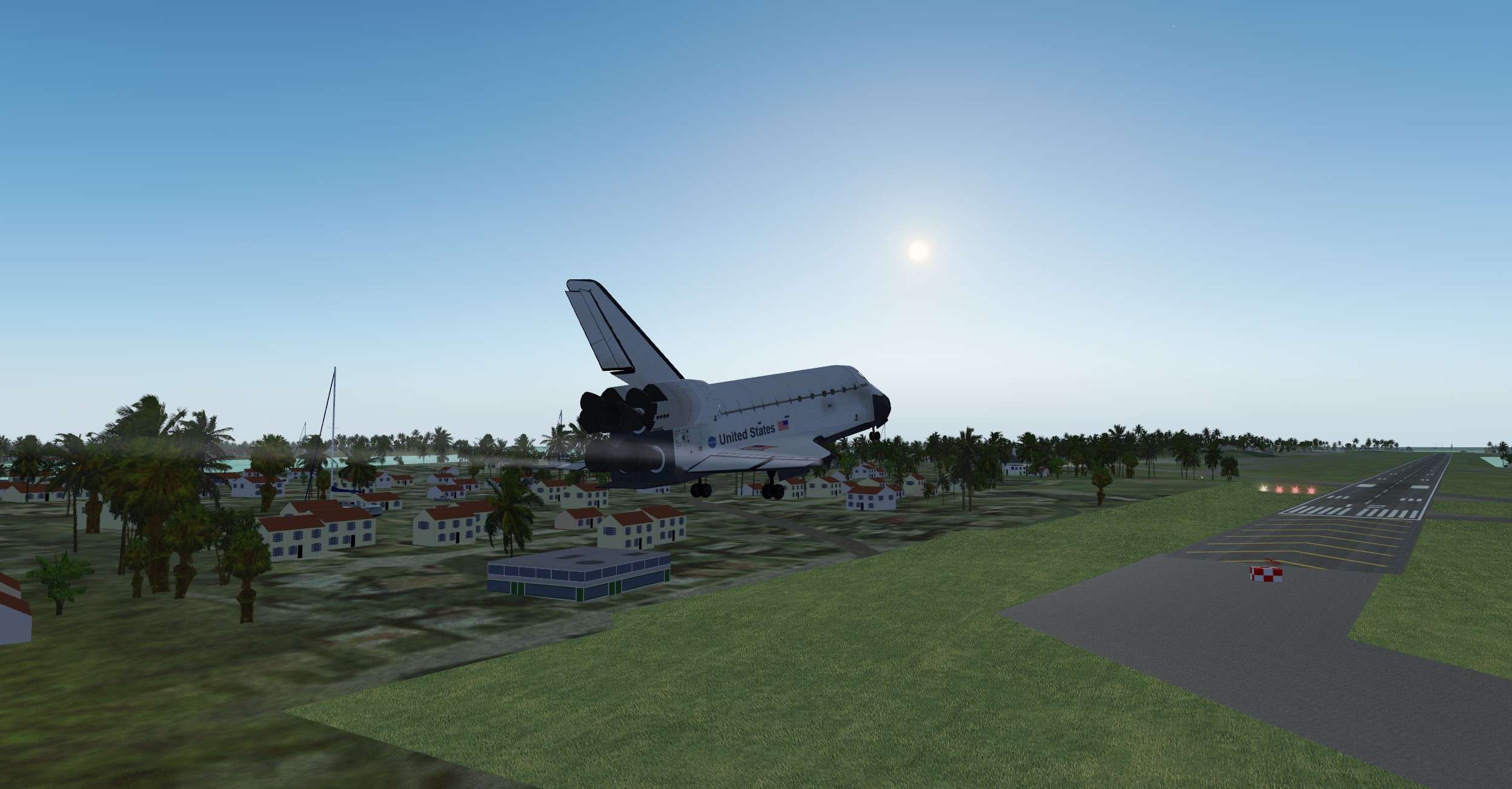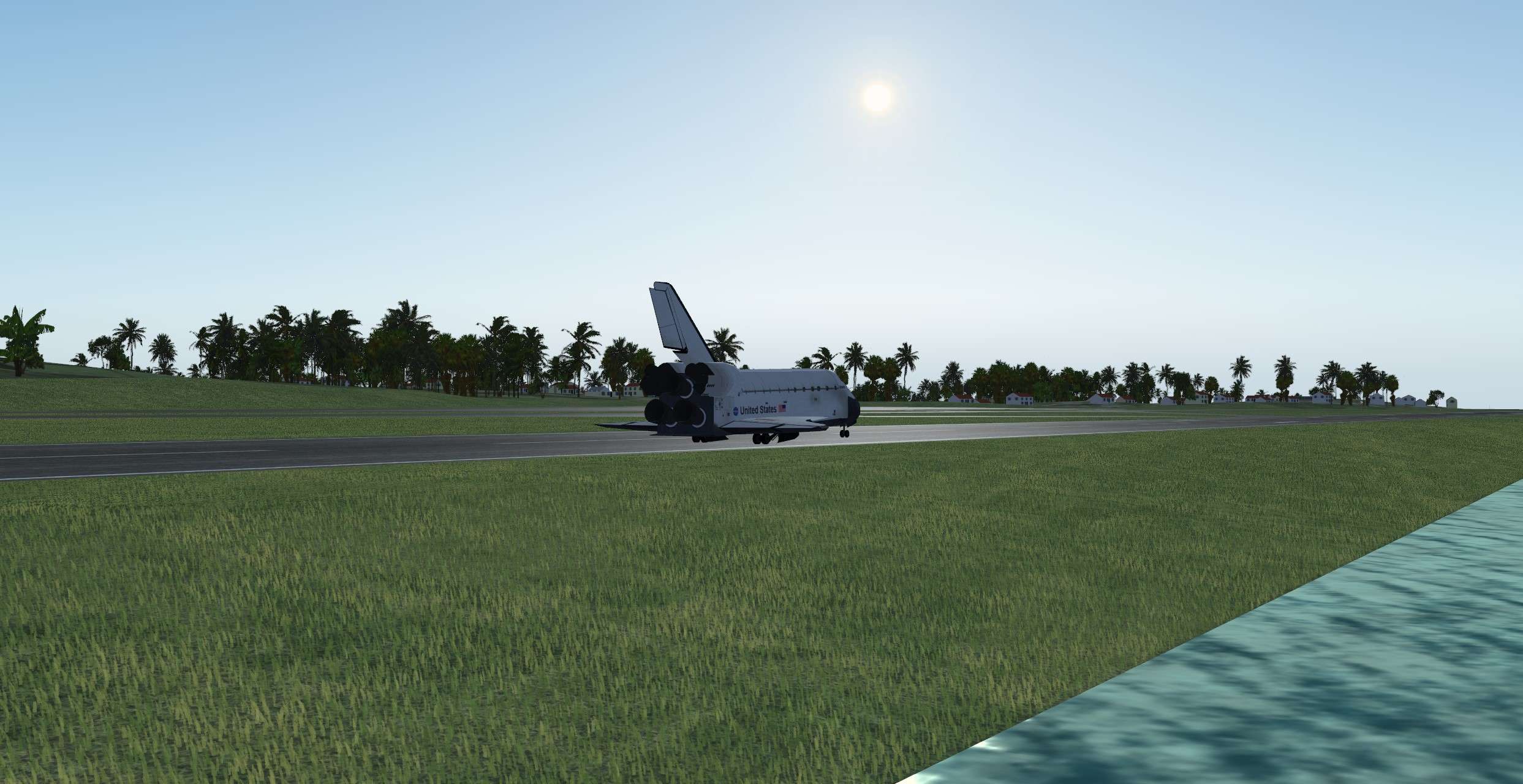Hey guys, one of my last flight with the Shuttle working on some contigency abort to Bermuda.
Made it finally

It might have been the shortest space flight of the last decade.
Less than 20 mn to reach Bermuda Island at Mach 10.
But it wasn't supposed to be like that, I didn't expect to end my first Shuttle flight as a Commander like that.
Everything started on a warm morning of may, Sunrise at horizon, everyone settled and restrained in their seats.
Almost ready to go for a maintenance mission to Hubble.
APU started, final countdown started. From now on, we have to monitor our gigantic fuel trap, and think fast in case of failure.
All the cameras are turned towards the Pad
We have a go for Launch, SRB ignition followed by Main Engines ignition, 3 G's in our face for 2 mn. Let's breath and relax.
First stage of ascent, so critical. Bucket Ok, everything looks good.
The Orbiter is shaking like hell. Hopefully, SRB separation is gonna occur soon.
Bye Bye KSC
Hello Second stage of ascent, more peacefull in appearance.
Sun is rising, but we are still 5 mn from MECO, let's focus.
My hand is never far from the Abort Switch, in case you know..
BAM, Master Alarm, Left Engine failure. My hand is sweating now, and I have to get rid of that startle effect.
MCC gave us its Instruction.
Atlantis , Go TAL abort to Banjul.
No time to think, they know better what is best between a RTLS and a TAL.
TAL and abort switch pressed.
GPC change and display a screen that I would have never think to see for real.
Damn, it is happening
Dump started, crossfeed valves opened, and OMS propellant is going out like expected.
Not too bad in our sadness
Almost at 10000 feet per second, or Mach 10. Nothing new, I read again my checklist for the TAL abort.
Parameters are good.
What now? Another Master Caution, we lost the right engine , and it's not good at all.
Droop altitude is flashing, we are not gonna do it before 265000 feet.
Few seconds to think with my pilot and Mission specialist, we have to go into our contigency abort for 2 engine out.
We should be ok for Bermuda Island or a Bailout.
MCC confirms, go EO 2 Green Bermuda abort.
Roger that MCC.
Again another screen configuration, what a day. Am I in the sim or is it for real ?
We are diving like hell into atmosphere, and our only remaining engine is struggling to give us enough vertical speed to not Over G during entry.
Let's have faith in the procedures, after all, NASA guys are top notch...
280000 feet and diving again, MECO and External Tank fast separation before 265000 feet. We are already in higher layer of atmosphere.
50 degrees of angle of attack, Nz to hold at 3.8 G. AP is working well.
Propellant dump is occuring, good.
I am starting to believe we might survive that one. We should avoid the lethal 4.1 G boundary.
I advise my mates that we might black out a bit during that phase.
Here we are, let's pray
Phew, we survived the trickiest phase of this abort. Shuttle Ok.
At least now, we can write for sure that the Shuttle can survive 4 G. It's not anymore an engineering thing.
TAEM interface, we are on track for runway 12 in Bermuda.
Now, another feeling is rising in me. I will have to land that flying brick onto an Emergency Landing Site with a short runway.
What a challenge.
I have been trained during 5 years for that, let's do it
We go subsonic and go full manual CSS, Time for me to shine one last time
Final turn into the HAC, quick glance to the Yacht in that crystal water. Soon maybe we will relax there...
Short final, State vector is good despite the lack of MLS to precisely update it. Almost there
ATC guy confirms he got us in sight
Here come the final flare, My god, that runway is really short, should I land firmly to assure us a safe stop on the runway?
Answer is yes, I pefered to land a bit firm and break the main gears instead of overrun the runway.
The longest 20 mn of my life, I am now looking to my crew and can feel the relieve in their eyes.
Let's finish the shutdown and secure actions.
Nobody from Nasa is waiting for us there, and we still have very hazardous things in our tanks.
No doubt, I will have a long debrief with the Chief Pilot, but we saved the day and almost a Shuttle.
Time to sleep


